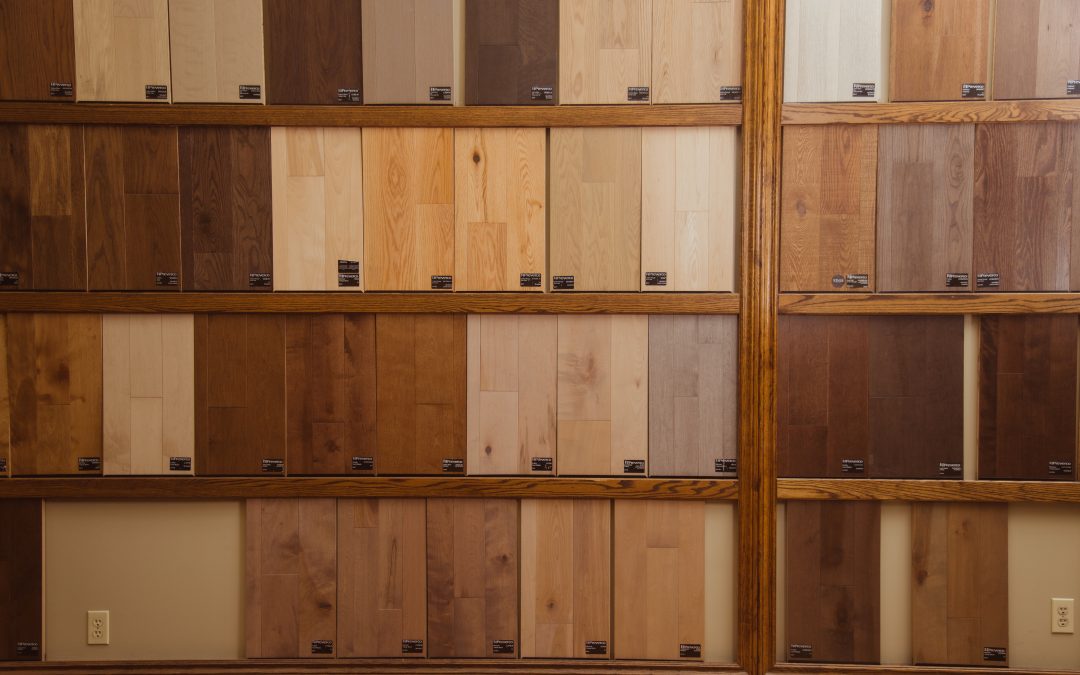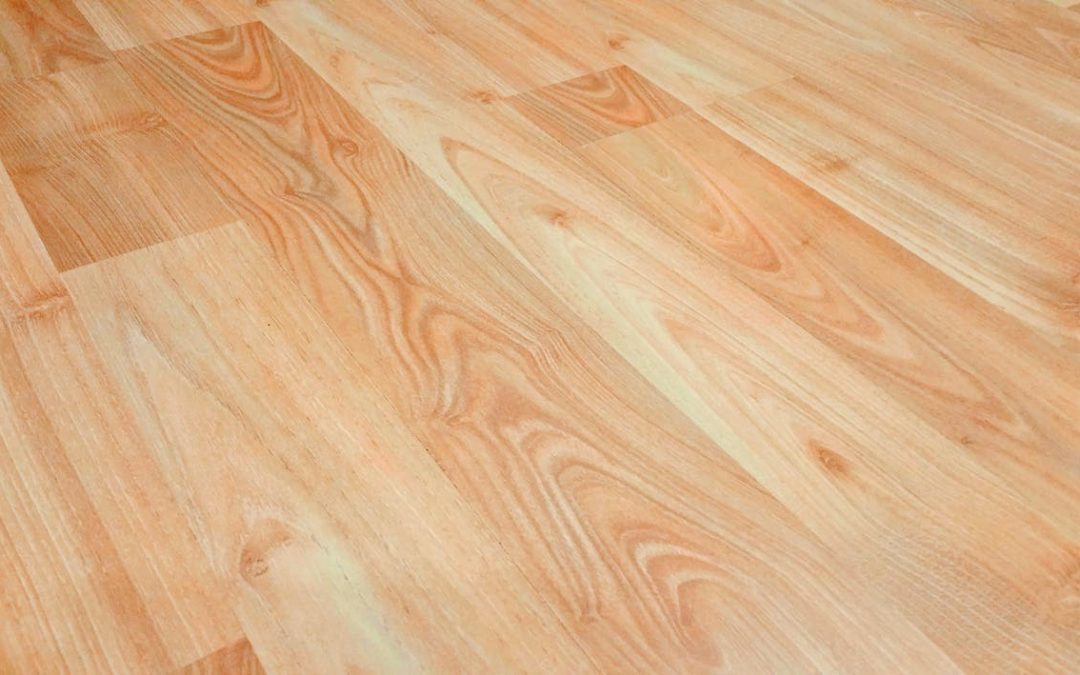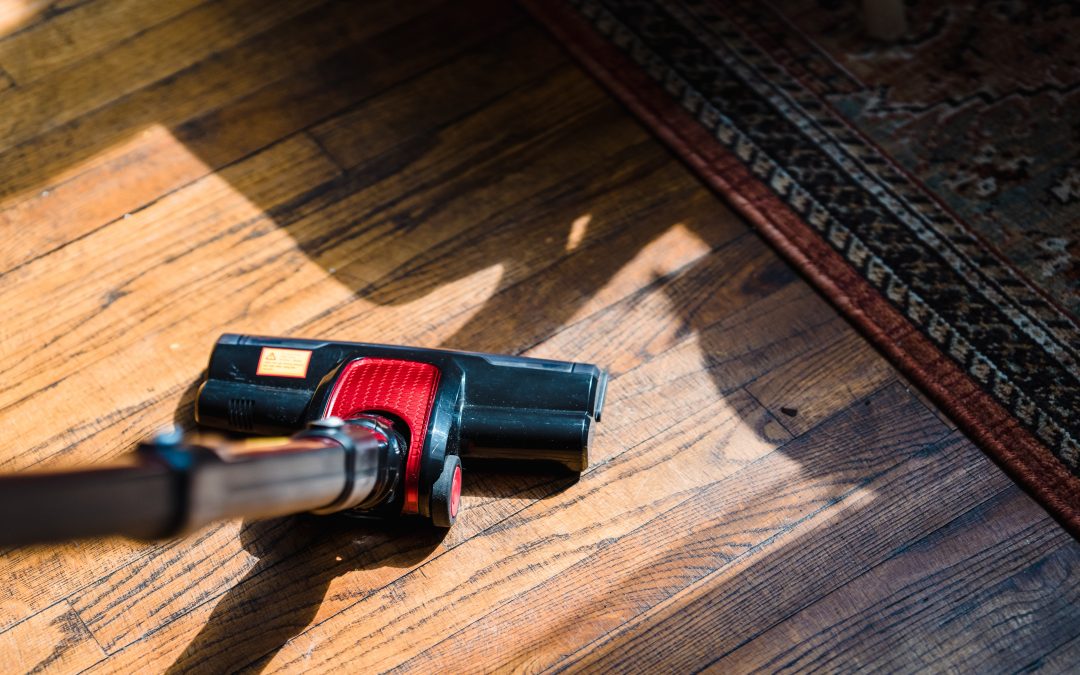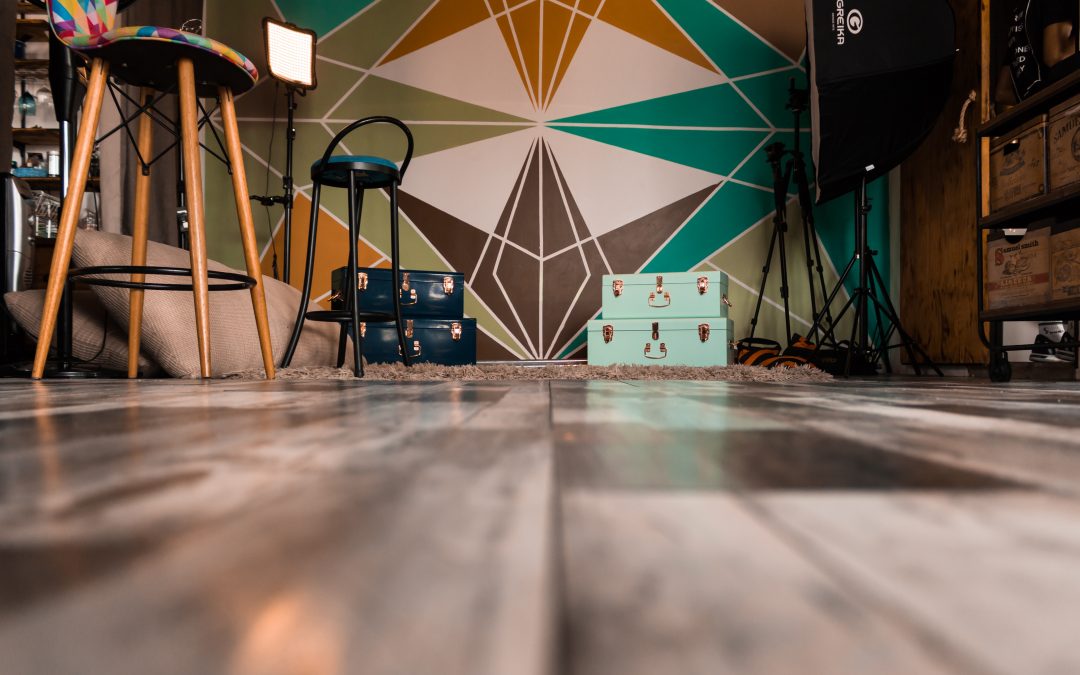
Nov 15, 2023
Oh, hardwood flooring, the crown jewel of many a home. But it seems like this classic beauty isn’t without its share of myths. Let’s take a humorous journey through the forest of fibs and fallacies that surround hardwood floors and get to the truth.
Myth 1: Hardwood Floors Demand Helicopter Parenting
Worried that your hardwood floors will turn into needy teenagers? Fear not, for the care and maintenance of hardwood are surprisingly low-key. There’s no need for an overbearing parent routine here. Just regular sweeping and the occasional vacuuming to rid your floors of dust bunnies. For a more hands-on approach, just grab a damp cloth with mild soap. But remember, your floors hate sitting in puddles, so give them a good drying off afterward.
Myth 3: Hardwood Floors Are as Fragile as a Soap Bubble
People often think hardwood floors are delicate like fine china, but that’s far from the truth. There are old homes out there proudly showing off their original hardwood floors, which have been kicking it for centuries. So, if you give your floors a smidge of care, they’ll outlast your latest smartphone.
Myth 4: Hardwood Floors Will Break the Bank
Alright, let’s talk dollars and sense. Yes, hardwood floors can seem a bit pricier upfront compared to other options, but don’t judge a floorboard by its price tag! Think of it as an investment in elegance that will outlast your fondness for trendy TikTok dances. With proper care, they can keep their dashing looks for a century or longer. That’s a bargain if you ask us!
Myth 5: Hardwood Floors Are a Magnet for Scratches and Dents
Is your mental image of hardwood floors filled with scratches and dents? Well, put that thought on ice! Not all hardwood is made equal, and some, like white oak, are tough cookies. So, ask your flooring expert for the strength rating of your chosen hardwood.
And when life inevitably throws some scuffs your way, don’t fret. Most of the time, it’s the finish that takes the hit, not the wood itself. A bit of light sanding and a fresh finishing coat can work magic. For the deeper scratches, there’s an entire arsenal of repair options.
Myth 6: Engineered Floors Aren’t the Real Deal
The term ‘engineered’ can be misleading. But in this case, it’s a compliment! Engineered wood floors are like the MVPs of the hardwood world. They’re eco-friendly, budget-conscious, and top-quality. In fact, they’ve pulled a Clark Kent and gone from being seen as a cost-cutting alternative to becoming a floor-favorite. And they save trees while they’re at it!
So there you have it, folks! Hardwood floors are not the finicky divas you might think. They’re tough, eco-friendly, and make for an investment that can pay off in both style and longevity. So, toss those myths out the window and let the true beauty of hardwood shine in your home.

Sep 15, 2023
The floor has been laid, the walls painted, the furniture picked out, and now you are stumped. Choosing the right stain and finish for your new wood flooring is much harder than it looks. With so many factors to consider, it’s hard to keep track of them (who knew that wood could be so high-maintenance?) Fear not, brave homeowner, for we’re here to unravel the enigma and help you decide on the whole staining and finishing ordeal.
- Consider Your Style
Alright, let’s talk about style. Are you aiming for “My Grandma’s Attic Chic,” “Swanky Manhattan Loft,” or “Slightly Classier than IKEA”? The color of your stain will basically determine whether your floors scream “I’m a minimalist” or “I’m a slightly complicated minimalist.” You want the floors to complement your home – not clash, so imagine the stains of your choice with the furniture and style you are going for.
- Test, Test, and Then Test Some More
Before you or your flooring installer go all Picasso on your precious floors, let’s test those stains. Apparently, wood has commitment issues and can react differently to each stain. It’s better to find out now than when your living room floor is coated and the furniture is back in place. Make sure to prep the floor as you would if you were going to stain the whole area. Prep makes a big difference. Also try with water popping and without, this can drastically change how the final color will look.
- Understanding Finishes (It’s Like Choosing an Ice Cream Topping, But for Wood)
You’ve got options! Polyurethane, oil-based, water-based—sounds like a chemistry lesson, right? Just remember, polyurethane is like a superhero cape for your wood (It wants to protect your floors), an oil-based finish brings out that “organic glow,” and water-based is, well, water-based. Most waterborne finishes are ‘clear over glass’, or basically have no amber tint to them so they don’t affect the final color. They also have less of that chemical smell while applying, and it dries super quickly. Take your pick, because your floors deserve the red carpet treatment—without the carpet, of course.
- Assess Foot Traffic
Consider the level of foot traffic in the area where you plan to install wood floors. Dogs, Kids, or just your favorite place to pace back and forth—if your hallway moonlights as a racetrack, you might want to go for a durable and scratch-resistant finish. Think of a catalyzed water base finish like Loba 2k for a more durable finish.
- Maintenance and Refinishing (Because Who Doesn’t Love Regular Chores?):
Some finishes need more attention, while others are more chill and low-maintenance. You decide how often you want to buff, polish, and coax your floors into looking fabulous. Oh, and if you’re into DIY projects that rival home renovation shows, pick a finish that’s easy to patch up. Instant gratification!
- Balance with Natural Light
Take into account the amount of natural light that enters the room. Dark stains will soak up the light and make a room appear smaller, while lighter stains can reflect light and create an airy ambiance. It’s like having a wood floor that’s also an interior decorator.
- Seek Professional Advice
Can’t decide between “Natural Oak” and “Antique Cherry”? If you’re unsure about the best stain and finish combination for your wood floors, don’t hesitate to consult some flooring professionals (Like us!). We are happy to explain the different options you have for your floors, and help you make the ideal choice for your home!

Aug 2, 2023
Preserving the splendour and lifespan of your wood floors is a big deal, flooring friends. And let us tell you, cleaning them the right way is key to nailing that goal. As wood flooring aficionados, we’ve got some juicy tips to spill on how to scrub those planks without falling into the common cleaning traps. Buckle up and get ready to conquer the battle of wood floor cleaning dos and don’ts!
Water and Wood – A Risky Combination:
We’ve all heard the phrase “water and wood don’t mix,” and when it comes to cleaning wood floors, it’s wise to abide by this rule. Unless specifically recommended by the wood flooring or finish manufacturer, avoid using steam cleaners. The high heat and moisture from steam can cause peeling, whitening, and cloudy finishes, resulting in long-term damage to your beautiful wood floors.
Vinegar and Water – Not the Best Duo:
Unless you love the occasional sticky floor, avoid vinegar and water! In the past, vinegar and water were often suggested for cleaning wood floors with a urethane finish. Times change, and so does solid (wood) advice! Vinegar is acidic, and excessive use can potentially damage the finish, leading to a dull appearance and the occasional tacky residue. Most manufacturers now recommend using cleaners specifically formulated for wood floor finishes and avoiding vinegar altogether. You can reach out to your wood manufacturer and find out what cleaning product they suggest.
Sweep Away the Debris:
Keeping the bits and bobs off your wood floor with a quick sweep is ALWAYS advised. A decent broom and regular sweep prevents crumbs from scratching or dulling the surface of your floors.
Quick Clean-Up for Spills:
If you spill it, kick it into overdrive and clean it quickly! Even the best of us are clumsy, and slip-ups can happen with a rouge glass of OJ. If you spill something on the floor, wipe it up quickly – using your manufacturer’s recommended cleaner! Top tip to help keep your wood floors healthy and unstained.
Still Unsure?
If you are new to owning a wood floor, cleaning it might be daunting. We get it! Especially if you are unsure about your wood flooring finish or where to find out what your manufacturer advises for cleaning. Our team of wood flooring experts is here to assist you. Feel free to stop by, and we’ll help you identify your wood floor finish, what will work best for your floors, and offer super secret tips and tricks for the best wood care around. Send us a DM on instagram, give us a call or visit the showroom in Scarborough, Ontario.

Jun 21, 2023
When it comes to flooring options, engineered wood flooring is a true game-changer. With its unique construction and a touch of innovation, this flooring solution offers the perfect blend of function and style. But what is it, and why should you consider it for your next flooring project? Let’s dive into the secrets of engineered wood flooring and discover why it’s become a favourite among homeowners.
Engineered hardwood flooring is designed with layers that combine the best of both worlds. At a minimum, the top layer is made of 100% real hardwood, providing that authentic and luxurious look and feel. However, it’s the core that sets engineered wood flooring apart. It can be made of layers of hardwood or softwood, usually crisscrossed and bonded together, or of a wood composite like HDF. The core enhances the stability and strength of the flooring. A pick and mix of materials that are ‘engineered’ to work together, and be more stable than their real wood counterparts.
Thanks to its construction, engineered hardwood is much more stable than solid hardwood. It’s less likely to shift or expand when exposed to changes in temperature and humidity. This makes it a great choice for areas where traditional hardwood may not be suitable, like basements, condominiums, or rooms with concrete subfloors. It also makes it the choice for wide or ultra-wide boards. For example, if the swell rate for a 6″ board of Red Oak is just 2%, the seasonal expansion could result in a swell or shrink rate of 1/8″. In a room 15 feet wide, that could be over 3 inches of movement. The layered structure of engineered wood can come close to eliminating expansion and contraction and also minimizes the risk of warping or moisture damage, ensuring a long-lasting flooring solution.
One common misconception is that engineered hardwood is cheaper than the same floor made of solid hardwood. In reality, the cost of manufacturing is much higher for engineered hardwood. Instead of just being milled into shape, the top layers need to be made in lamellas, and then the core needs to be milled into its various components, and then all of these layers need to be glued together using expensive, high-quality adhesive and sophisticated state-of-the art presses. In theory, though, as the cost of hardwoods increases in relation to softwoods or lower grades of hardwood, the overall cost of engineered flooring can come down to the same or even lower than the cost of solid flooring.
Some engineered hardwood can also last just as long as solid hardwood. With some manufacturers boasting as much as a 6mm wear layer, engineered hardwood can be refinished as many times as solid hardwood. Of course, to cut costs, some engineered flooring can have a very thin top layer, making refinishing impossible.
As with any product, doing your research and buying from a reputable, top-quality manufacturer is important. This is especially important for engineered hardwood. The top layer, the grade, and the structural warranty are all vital. Since engineered hardwood is made up of multiple components, its structural warranty and the company that stands behind that warranty are super important.
So, whether you’re looking to sprinkle warmth and elegance in your living room or want to rock a dependable and eye-catching basement floor, engineered wood flooring could be the answer to your dreams. Its construction, combining layers of hardwood, softwood, or composites, ensures stability, durability, and resistance to moisture. With a wide range of finishes and styles available, you can find the perfect engineered wood flooring to suit your taste and create a stunning focal point in any room.
Embrace the secrets of engineered wood flooring and transform your space into a masterpiece of durability and style. Discover the endless possibilities and make a statement with this versatile flooring solution that will stand the test of time.

Jun 9, 2023
The infamous difficult-to-please customers we’ve all encountered at some point: Karens. They will pop up in every industry, not even the flooring industry is safe. While their complaints may be frustrating, there are strategies to provide excellent customer service and resolve any situation.
The first tip is to listen attentively to their concerns, even if it requires gritting your teeth and smiling through the conversation. Showing empathy for their troubles is equally important, as we’ve all faced our fair share of challenges. Whether it’s indecisiveness or difficulties matching existing flooring, approaching any customer complaint with understanding and patience can turn a negative experience into a positive one.
Read more on how to deal with the challenges of handling negative energy in the wood flooring industry: https://www.woodfloorbusiness.com/blogs/article/15448116/sponsored-how-to-deal-with-karens-the-complainers




